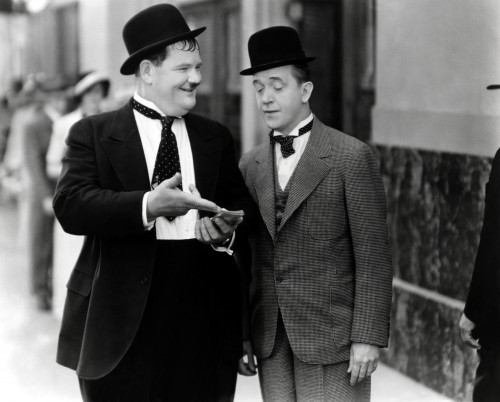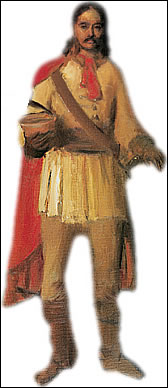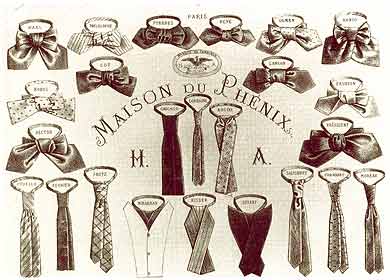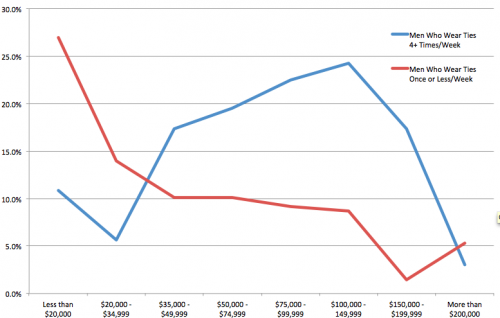
Have you ever wondered why men wear ties ? Did you ever ask yourself how this style trend evolved? After all, the necktie is purely a decorative accessory. It doesn’t keep us warm or dry, and certainly does not add comfort. Yet men all around the world, myself included, love wearing them. To help you understand the history and evolution of the necktie I decided to write this post.
The Origin of the Necktie

Most sartorialists agree that the necktie originated in the 17th century, during the 30 year war in France. King Louis XIII hired Croatian mercenaries (see picture above) who wore a piece of cloth around their neck as part of their uniform. While these early neckties did serve a function (tying the top of their jackets that is), they also had quite a decorative effect – a look that King Louis was quite fond of. In fact, he liked it so much that he made these ties a mandatory accessory for Royal gatherings, and – to honor the Croatian soldiers – he gave this clothing piece the name “La Cravate” – the name for necktie in French to this day.
The Evolution of Modern Necktie

The early cravats of the 17th century have little resemblance to today’s necktie, yet it was a style that stayed popular throughout Europe for over 200 years. The tie as we know it today did not emerge until the 1920s but since then has undergone many (often subtle) changes. Because lots of change has happened to the design of the tie in the past century I decided to break this down by each decade:
- 1900-1909:
The tie was a must-have clothing accessories for men in the first decade of the 20th century. Most common were Cravats which evolved from the early 17th century ties that were brought to France by the Croatians. What was different however, was how they were tied. Two decades earlier, the Four in Hand knot had been invented which was the only knot used for cravats. While other tie knots have been invented since, the Four in Hand is still one of the most popular tie knots today. The two other common neckwear styles popular at the time were bow ties (used for evening white tie attire), as well as ascots (required for formal day time dress in England). - 1910-1919
The second decade of the 20th century saw a decline in formal cravats and ascots as men’s fashion became more casual with haberdashers putting a stronger emphasis on comfort, functionality, and fit. Towards the end of this decade neckties closely resemble the ties as we know them today. - 1920-1929
The 1920s were an important decade for men’s ties. A NY tie maker by the name of Jessie Langsdorf invented a new way of cutting the fabric when constructing a tie, which allowed the tie to spring back into its original shape after each wearing. This invention triggered the creation of many new tie knots.
Neckties became the predominant choice for men as bow ties were reserved for formal evening and black tie functions. Furthermore, for the first time, repp-stripe and British regimental ties emerged. - 1930-1939
During the Art Deco movement of the 1930s, neckties became wider and often displayed bold Art Deco patterns and designs. Men also wore their ties a bit shorter and commonly tied them with a Windsor knot – a tie knot that the Duke of Windsor invented during this time. - 1940-1949
The early part of the 1940s didn’t offer any exciting change in the world of men’s ties – possibly an effect of WWII which had people worry about more important things than clothing and fashion. When WWII ended in 1945 however, a feeling of liberation became evident in design and fashion. Colors on ties became bold, patterns stood out, and one retailer by the name of Grover Chain Shirt Shop even created a necktie collection displaying sparsely dressed women. - 1950-1959
When talking about ties, the 50s are most famous for the emergence of the skinny tie – a style designed to compliment the more form fitting and tailored clothes of the time. Additionally tie makers started experimenting with different materials. - 1960-1969
Just as ties were put on a diet in the 50s, the 1960s went to the other extreme – creating some of the widest neckties ever. Ties as wide as 6 inches were not uncommon – a style that got the name “Kipper Tie” - 1970-1979
The disco movement of the 1970s truly embraced the ultra wide “Kipper Tie”. But also worth noting is the creation of the Bolo Tie (aka Western Tie) which became Arizona’s official state neckwear in 1971. - 1980-1989
The 1980s are certainly not known for great fashion. Instead of embracing a certain style, tie makers created any kind of neck-wear style during this period. Ultra-wide “Kipper Ties” were still present to some degree as was the re-emergence of the skinny tie which was often made from leather. - 1990-1999
By 1990 the style Faux Pas of the 80s slowly faded away. Neckties became a bit more uniform in width (3.75-4 inches). Most popular were bold floral and paisley patterns – a style that has recently resurfaced as a popular print on modern ties today. - 2000-2009
Compared the the decade before ties became a bit thinner at about 3.5-3.75 inches. European designers further shrunk the width and eventually the skinny tie re-emerged as a popular stylish accessory. - 2010 – 2013
Today, ties are available in many widths, cuts, fabrics, and patterns. It is all about choice and allowing the modern man to express his own personal style. The standard width for ties is still in the 3.25-3.5 inch range, but to fill the gap to the skinny tie (1.5-2.5″), many designers now offer narrow ties that are about 2.75-3 inches wide. Besides the width, unique fabrics, weaves, and patterns emerged. Knitted ties became popular in 2011 and 2012 saw a strong trend of bold florals and paisleys – something that continued throughout 2013.
Thanks for visiting. Should you have any comments, or like to start a conversation on this topic, please comment below. I do check all comments, and I do my best to reply to each and every one of them.
Sincerely,
Hendrik
Tie Aficionado & Founder of Tie-a-Tie.net

